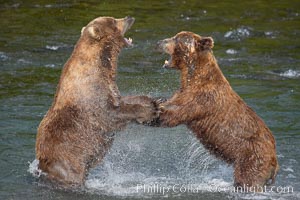
Two mature brown bears fight to establish hierarchy and fishing rights.
Species: Brown bear, Ursus arctos
Location: Brooks River, Katmai National Park, Alaska
Image ID: 17036
Species: Brown bear, Ursus arctos
Location: Brooks River, Katmai National Park, Alaska
Image ID: 17036
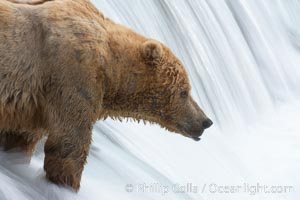
Brown bear waits for salmon at Brooks Falls. Blurring of the water is caused by a long shutter speed. Brooks River.
Species: Brown bear, Ursus arctos
Location: Brooks River, Katmai National Park, Alaska
Image ID: 17047
Species: Brown bear, Ursus arctos
Location: Brooks River, Katmai National Park, Alaska
Image ID: 17047

Panorama of the Teton Range reflected in the still waters of Schwabacher Landing, a sidewater of the Snake River.
Location: Grand Teton National Park, Wyoming
Image ID: 19129
Panorama dimensions: 3104 x 27272
Location: Grand Teton National Park, Wyoming
Image ID: 19129
Panorama dimensions: 3104 x 27272
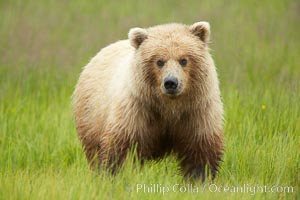
Juvenile female coastal brown bear (grizzly bear) grazes on sedge grass.
Species: Brown bear, Ursus arctos
Location: Lake Clark National Park, Alaska
Image ID: 19137
Species: Brown bear, Ursus arctos
Location: Lake Clark National Park, Alaska
Image ID: 19137
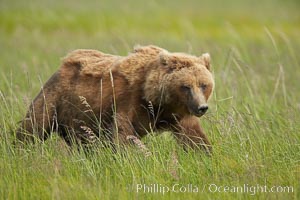
Coastal brown bear in meadow. The tall sedge grasses in this coastal meadow are a food source for brown bears, who may eat 30 lbs of it each day during summer while waiting for their preferred food, salmon, to arrive in the nearby rivers.
Species: Brown bear, Ursus arctos
Location: Lake Clark National Park, Alaska
Image ID: 19138
Species: Brown bear, Ursus arctos
Location: Lake Clark National Park, Alaska
Image ID: 19138
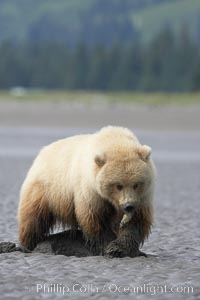
Juvenile female brown bear forages for razor clams in sand flats at extreme low tide. Grizzly bear.
Species: Brown bear, Ursus arctos
Location: Lake Clark National Park, Alaska
Image ID: 19141
Species: Brown bear, Ursus arctos
Location: Lake Clark National Park, Alaska
Image ID: 19141
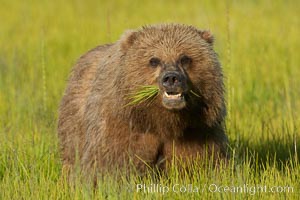
Young brown bear grazes in tall sedge grass. Brown bears can consume 30 lbs of sedge grass daily, waiting weeks until spawning salmon fill the rivers.
Species: Brown bear, Ursus arctos
Location: Lake Clark National Park, Alaska
Image ID: 19147
Species: Brown bear, Ursus arctos
Location: Lake Clark National Park, Alaska
Image ID: 19147
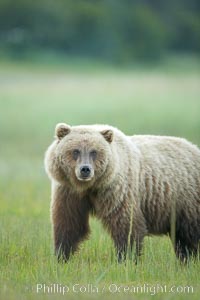
Coastal brown bear in meadow. The tall sedge grasses in this coastal meadow are a food source for brown bears, who may eat 30 lbs of it each day during summer while waiting for their preferred food, salmon, to arrive in the nearby rivers.
Species: Brown bear, Ursus arctos
Location: Lake Clark National Park, Alaska
Image ID: 19155
Species: Brown bear, Ursus arctos
Location: Lake Clark National Park, Alaska
Image ID: 19155
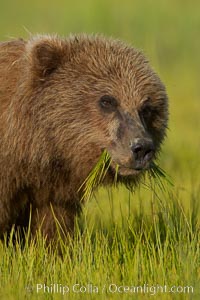
Young brown bear grazes in tall sedge grass. Brown bears can consume 30 lbs of sedge grass daily, waiting weeks until spawning salmon fill the rivers.
Species: Brown bear, Ursus arctos
Location: Lake Clark National Park, Alaska
Image ID: 19156
Species: Brown bear, Ursus arctos
Location: Lake Clark National Park, Alaska
Image ID: 19156
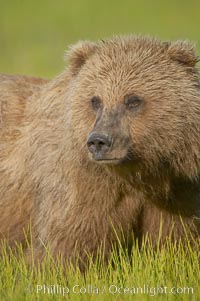
Portrait of a young brown bear, pausing while grazing in tall sedge grass. Brown bears can consume 30 lbs of sedge grass daily, waiting weeks until spawning salmon fill the rivers.
Species: Brown bear, Ursus arctos
Location: Lake Clark National Park, Alaska
Image ID: 19157
Species: Brown bear, Ursus arctos
Location: Lake Clark National Park, Alaska
Image ID: 19157
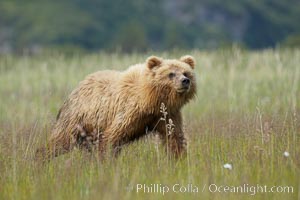
Coastal brown bear cub, one and a half years old, near Johnson River. This cub will remain with its mother for about another six months, and will be on its own next year.
Species: Brown bear, Ursus arctos
Location: Johnson River, Lake Clark National Park, Alaska
Image ID: 19159
Species: Brown bear, Ursus arctos
Location: Johnson River, Lake Clark National Park, Alaska
Image ID: 19159
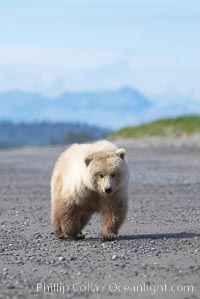
Juvenile female coastal brown bear walks on beach.
Species: Brown bear, Ursus arctos
Location: Lake Clark National Park, Alaska
Image ID: 19164
Species: Brown bear, Ursus arctos
Location: Lake Clark National Park, Alaska
Image ID: 19164
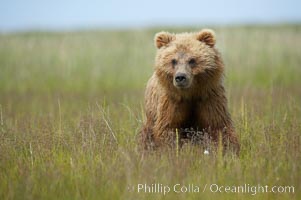
Coastal brown bear cub, one and a half years old, near Johnson River. This cub will remain with its mother for about another six months, and will be on its own next year.
Species: Brown bear, Ursus arctos
Location: Johnson River, Lake Clark National Park, Alaska
Image ID: 19199
Species: Brown bear, Ursus arctos
Location: Johnson River, Lake Clark National Park, Alaska
Image ID: 19199
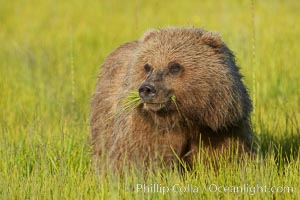
Young brown bear grazes in tall sedge grass. Brown bears can consume 30 lbs of sedge grass daily, waiting weeks until spawning salmon fill the rivers.
Species: Brown bear, Ursus arctos
Location: Lake Clark National Park, Alaska
Image ID: 19244
Species: Brown bear, Ursus arctos
Location: Lake Clark National Park, Alaska
Image ID: 19244
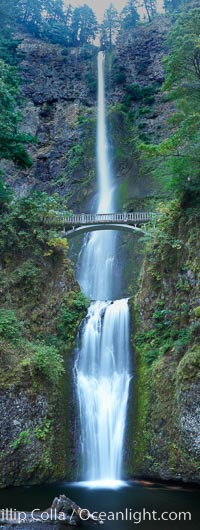
Multnomah Falls. Plummeting 620 feet from its origins on Larch Mountain, Multnomah Falls is the second highest year-round waterfall in the United States. Nearly two million visitors a year come to see this ancient waterfall making it Oregon's number one public destination.
Location: Multnomah Falls, Columbia River Gorge National Scenic Area, Oregon
Image ID: 19313
Panorama dimensions: 12453 x 4705
Location: Multnomah Falls, Columbia River Gorge National Scenic Area, Oregon
Image ID: 19313
Panorama dimensions: 12453 x 4705
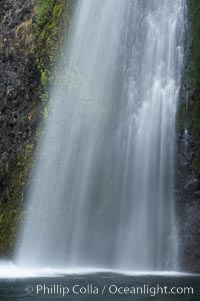
Horsetail Falls drops 176 feet just a few yards off the Columbia Gorge Scenic Highway.
Location: Horsetail Falls, Columbia River Gorge National Scenic Area, Oregon
Image ID: 19318
Location: Horsetail Falls, Columbia River Gorge National Scenic Area, Oregon
Image ID: 19318
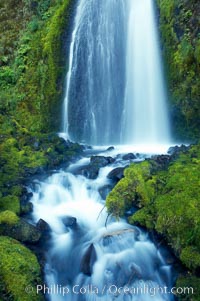
Wahkeena Falls drops 249 feet in several sections through a lush green temperate rainforest.
Location: Wahkeena Falls, Columbia River Gorge National Scenic Area, Oregon
Image ID: 19324
Location: Wahkeena Falls, Columbia River Gorge National Scenic Area, Oregon
Image ID: 19324
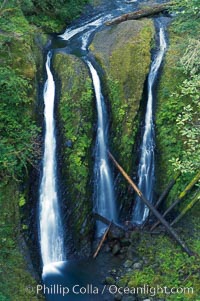
Triple Falls, in the upper part of Oneonta Gorge, fall 130 feet through a lush, beautiful temperate rainforest.
Location: Triple Falls, Columbia River Gorge National Scenic Area, Oregon
Image ID: 19326
Location: Triple Falls, Columbia River Gorge National Scenic Area, Oregon
Image ID: 19326
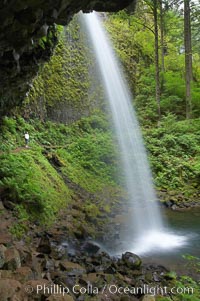
Ponytail Falls, where Horsetail Creeks drops 100 feet over an overhang below which hikers can walk.
Location: Ponytail Falls, Columbia River Gorge National Scenic Area, Oregon
Image ID: 19337
Location: Ponytail Falls, Columbia River Gorge National Scenic Area, Oregon
Image ID: 19337
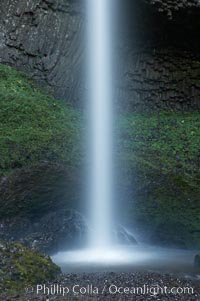
Latourelle Falls, in Guy W. Talbot State Park, drops 249 feet through a lush forest near the Columbia River.
Location: Latourelle Falls, Columbia River Gorge National Scenic Area, Oregon
Image ID: 19347
Location: Latourelle Falls, Columbia River Gorge National Scenic Area, Oregon
Image ID: 19347
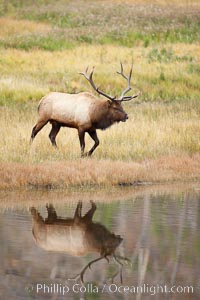
Male elk bugling during the fall rut. Large male elk are known as bulls. Male elk have large antlers which are shed each year. Male elk engage in competitive mating behaviors during the rut, including posturing, antler wrestling and bugling, a loud series of screams which is intended to establish dominance over other males and attract females.
Species: Elk, Cervus canadensis
Location: Madison River, Yellowstone National Park, Wyoming
Image ID: 19697
Species: Elk, Cervus canadensis
Location: Madison River, Yellowstone National Park, Wyoming
Image ID: 19697
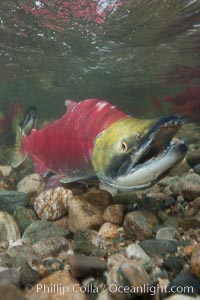
A male sockeye salmon, showing injuries sustained as it migrated hundreds of miles from the ocean up the Fraser River, swims upstream in the Adams River to reach the place where it will fertilize eggs laid by a female in the rocks. It will die so after spawning.
Species: Sockeye salmon, Oncorhynchus nerka
Location: Adams River, Roderick Haig-Brown Provincial Park, British Columbia, Canada
Image ID: 26147
Species: Sockeye salmon, Oncorhynchus nerka
Location: Adams River, Roderick Haig-Brown Provincial Park, British Columbia, Canada
Image ID: 26147
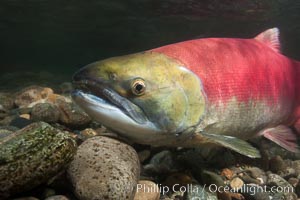
Adams River sockeye salmon. A female sockeye salmon swims upstream in the Adams River to spawn, having traveled hundreds of miles upstream from the ocean.
Species: Sockeye salmon, Oncorhynchus nerka
Location: Adams River, Roderick Haig-Brown Provincial Park, British Columbia, Canada
Image ID: 26157
Species: Sockeye salmon, Oncorhynchus nerka
Location: Adams River, Roderick Haig-Brown Provincial Park, British Columbia, Canada
Image ID: 26157
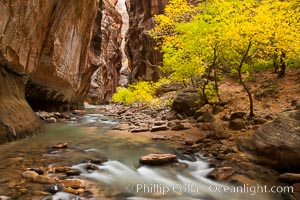
The Virgin River flows by autumn cottonwood trees, part of the Virgin River Narrows. This is a fantastic hike in fall with the comfortable temperatures, beautiful fall colors and light crowds.
Location: Virgin River Narrows, Zion National Park, Utah
Image ID: 26098
Location: Virgin River Narrows, Zion National Park, Utah
Image ID: 26098
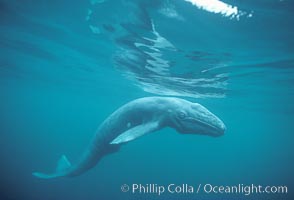
A neonate gray whale calf, born just hours before, still exhbiting embryonic folds in the skin along its side. This baby gray whale was born in the cold waters of Big Sur, far to the north of the Mexican lagoons of Baja California where most gray whale births take place.
Species: Gray whale, Eschrichtius robustus
Location: Monterey, California
Image ID: 01135
Species: Gray whale, Eschrichtius robustus
Location: Monterey, California
Image ID: 01135
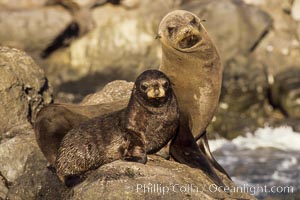
Guadalupe fur seal mother and pup.
Species: Guadalupe fur seal, Arctocephalus townsendi
Location: Guadalupe Island (Isla Guadalupe), Baja California, Mexico
Image ID: 02440
Species: Guadalupe fur seal, Arctocephalus townsendi
Location: Guadalupe Island (Isla Guadalupe), Baja California, Mexico
Image ID: 02440
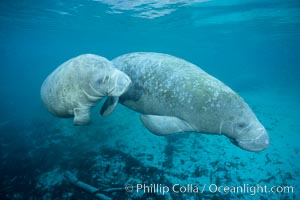
Two Florida manatees, or West Indian Manatees, swim together in the clear waters of Crystal River. Florida manatees are endangered.
Species: West indian manatee, Trichechus manatus
Location: Three Sisters Springs, Crystal River, Florida
Image ID: 02628
Species: West indian manatee, Trichechus manatus
Location: Three Sisters Springs, Crystal River, Florida
Image ID: 02628
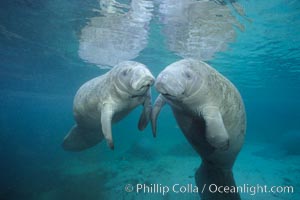
Two Florida manatees, or West Indian Manatees, swim together in the clear waters of Crystal River. Florida manatees are endangered.
Species: West indian manatee, Trichechus manatus
Location: Three Sisters Springs, Crystal River, Florida
Image ID: 02629
Species: West indian manatee, Trichechus manatus
Location: Three Sisters Springs, Crystal River, Florida
Image ID: 02629
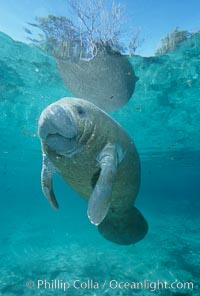
A Florida manatee, or West Indian Manatee, hovers in the clear waters of Crystal River.
Species: West indian manatee, Trichechus manatus
Location: Three Sisters Springs, Crystal River, Florida
Image ID: 02653
Species: West indian manatee, Trichechus manatus
Location: Three Sisters Springs, Crystal River, Florida
Image ID: 02653
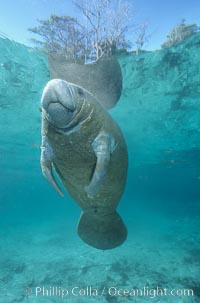
A Florida manatee, or West Indian Manatee, hovers in the clear waters of Crystal River.
Species: West indian manatee, Trichechus manatus
Location: Three Sisters Springs, Crystal River, Florida
Image ID: 02654
Species: West indian manatee, Trichechus manatus
Location: Three Sisters Springs, Crystal River, Florida
Image ID: 02654